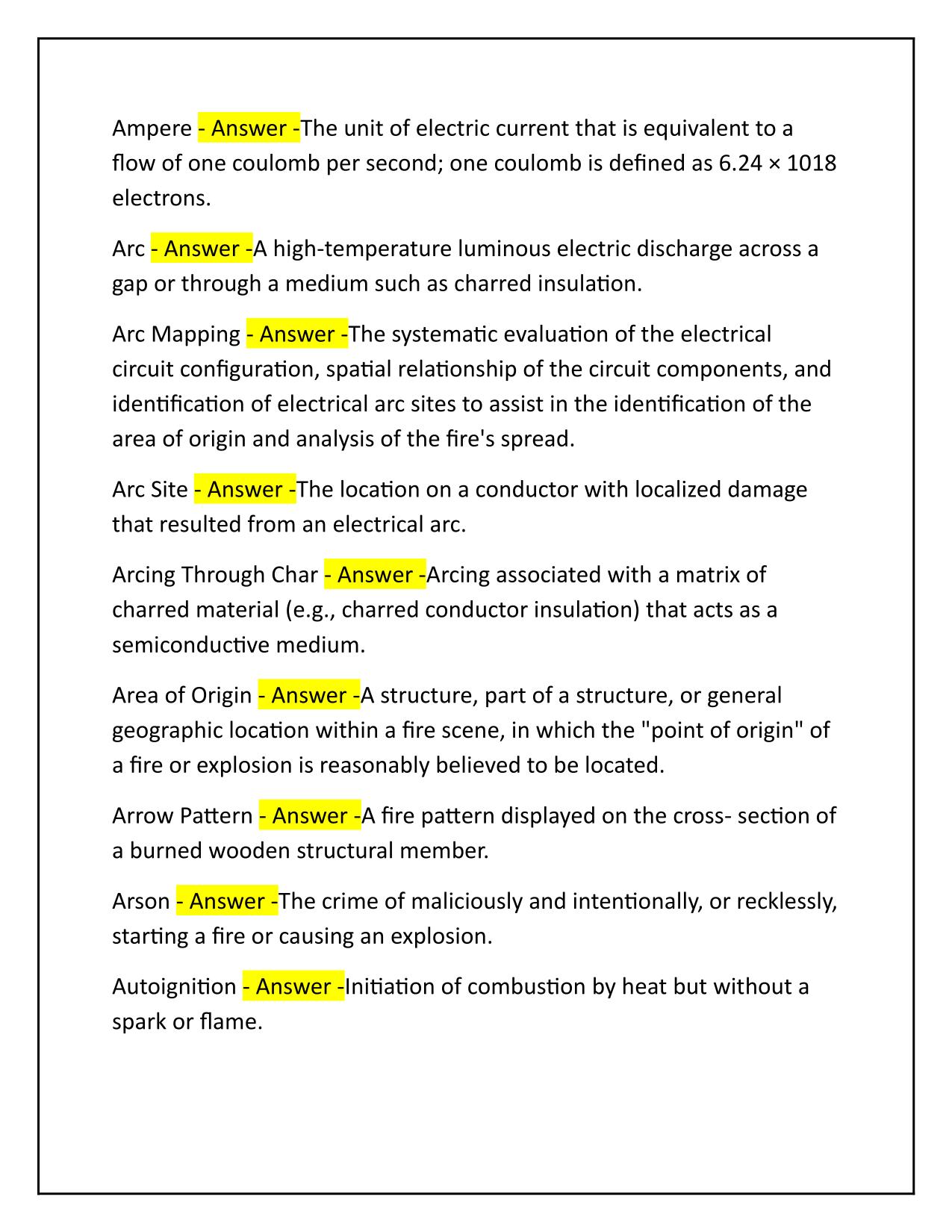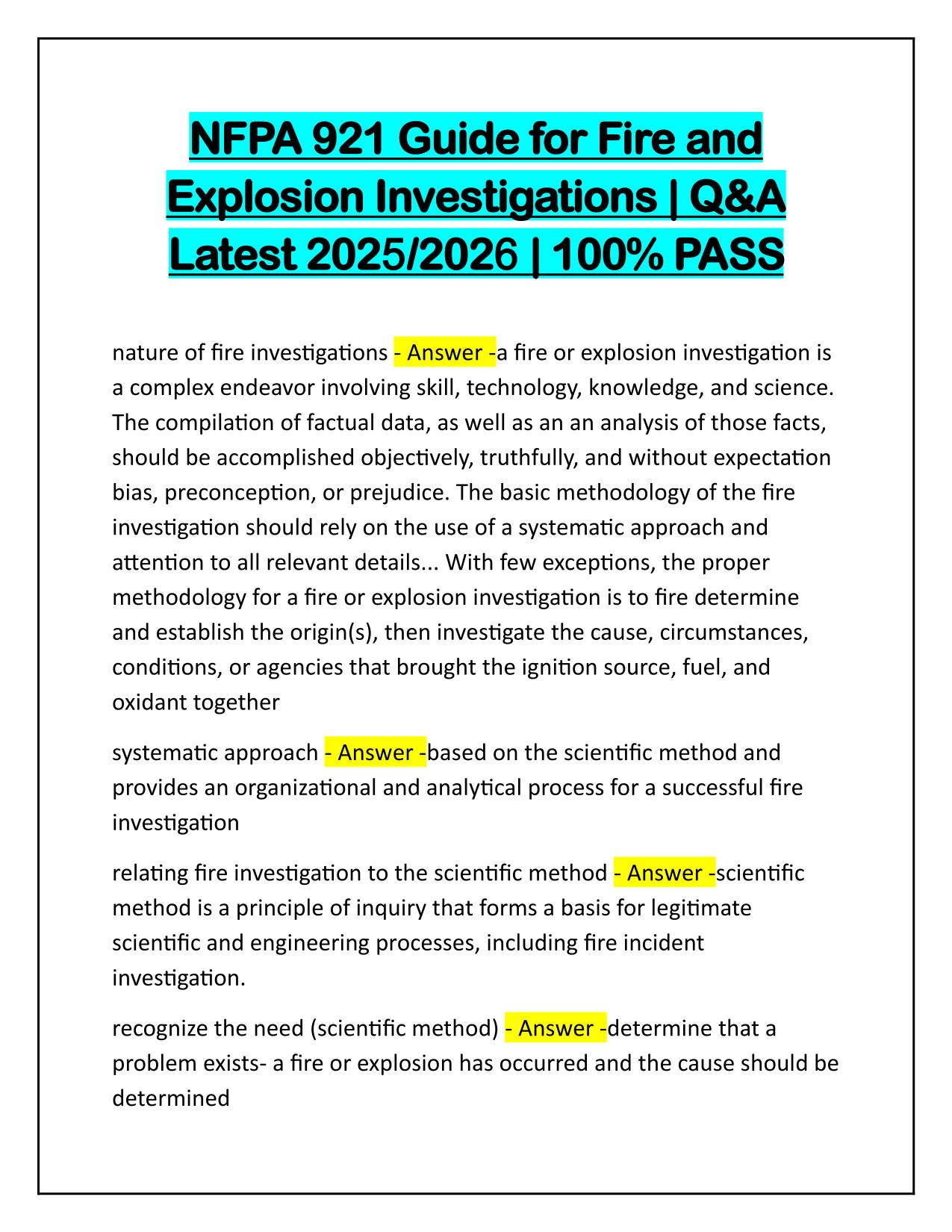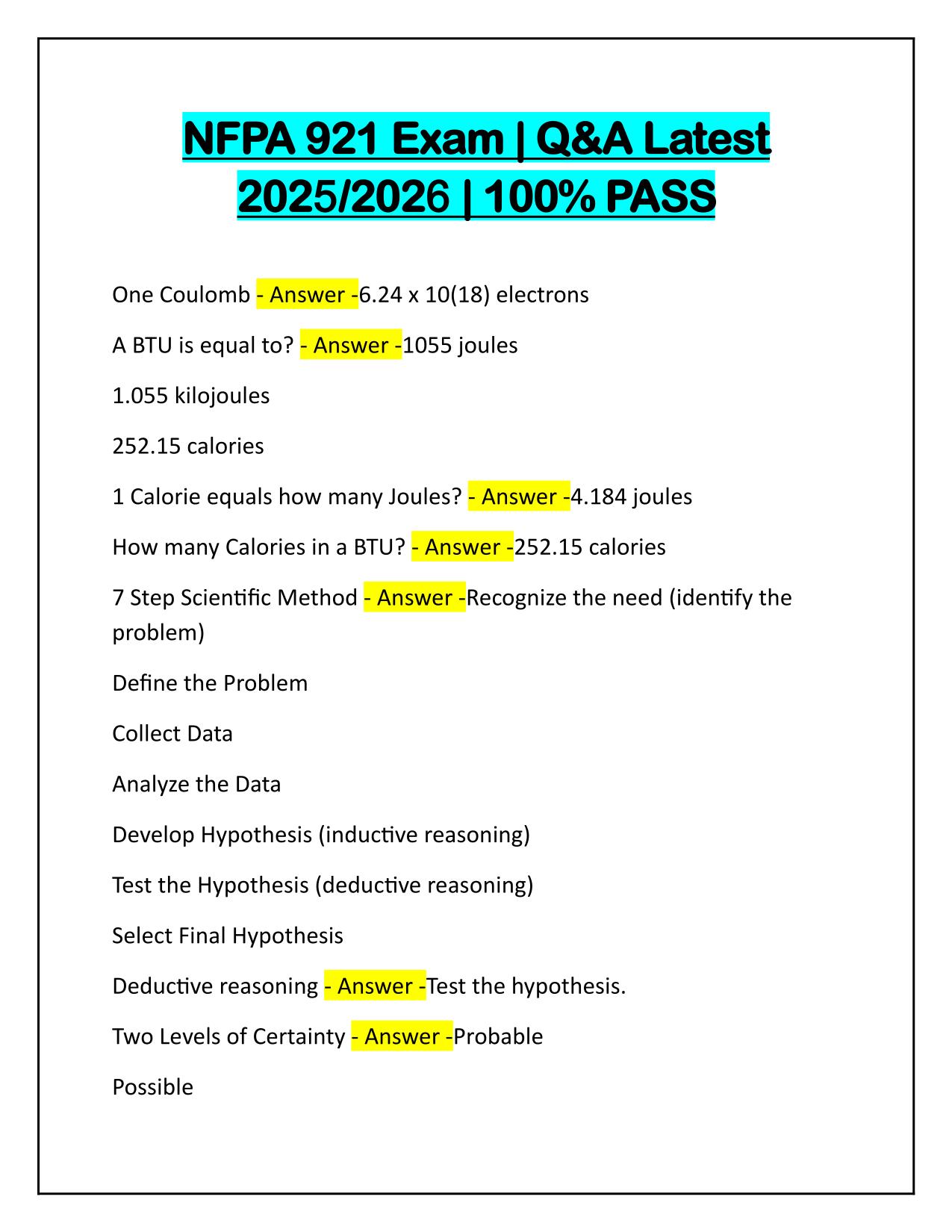Added to Cart
No documents added.
NFPA 921 Fire and explosion investigations Questions and Verified Answers 2025 Update
Course:
NFPA 921
Institution:
NFPA 921
NFPA 921 Fire and explosion investigations Questions and Verified Answers 2025 Update
After purchase, you get:
✅ Instant PDF Download
✅ Verified answer explanations
✅ Refund if not Satisfied
✅ Prepared for 2025/2026 test cycle
Document Information
| Uploaded on: | April 28, 2025 |
| Last updated: | May 12, 2025 |
| Number of pages: | 41 |
| Written in: | 2025/2026 |
| Type: | Exam (elaborations) |
| Contains: | Questions & Answers |
| Tags: | NFPA 921 Fire and explosion investigations Questions and Verified Answers 2025 Update |
Seller Information

AdelineJean
User Reviews (0)
Exam (Elaborations)
$11.00
Bundle Deal! Get all 3 docs for just $13.99
Add to Cart
100% satisfaction guarantee
Refund Upon dissatisfaction
Immediately available after purchase
Available in Both online and PDF
$11.00
| 0 sold
Discover More resources
Available in a Bundle
Content Preview
NFPA 921 Fire and explosion investigations | Q&A Latest 2025/2026 | 100% PASS Absolute Temperature - Answer -A temperature measured in Kelvins (K) or Rankines (R). Accelerant - Answer -A fuel or oxidizer, often an ignitible liquid, intentionally used to initiate a fire or increase the rate of growth or spread of fire. Accident - Answer -An unplanned event that interrupts an activity and sometimes causes injury or damage or a chance occurrence arising from unknown causes; an unexpected happening due to carelessness, ignorance, and the like. Active Fire Protection System - Answer -A system that uses moving mechanical or electrical parts to achieve a fire protection goal. Ambient - Answer -Someone's or something's surroundings, especially as they pertain to the local environment; for example, ambient air and ambient temperature. Ampacity - Answer -The maximum current, in amperes, that a conductor can carry continuously under the conditions of use without exceeding its temperature rating.
Send a Message to Seller
Gradesity

We are here to help
Questions? Leave a message!
Newsletter
Get notified upon new uploads. Subscribe to our Newsletter.



